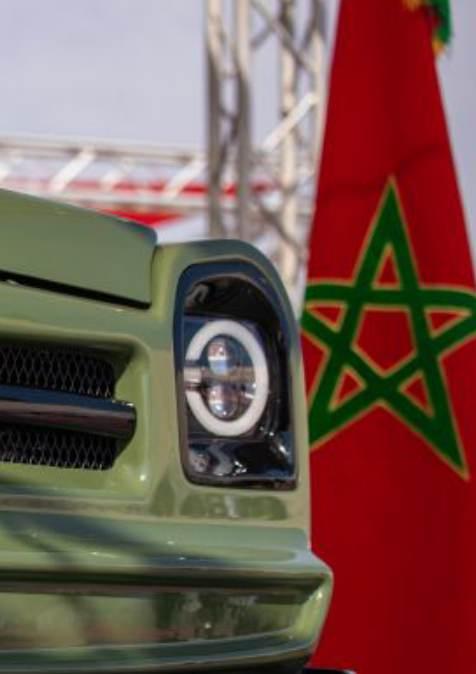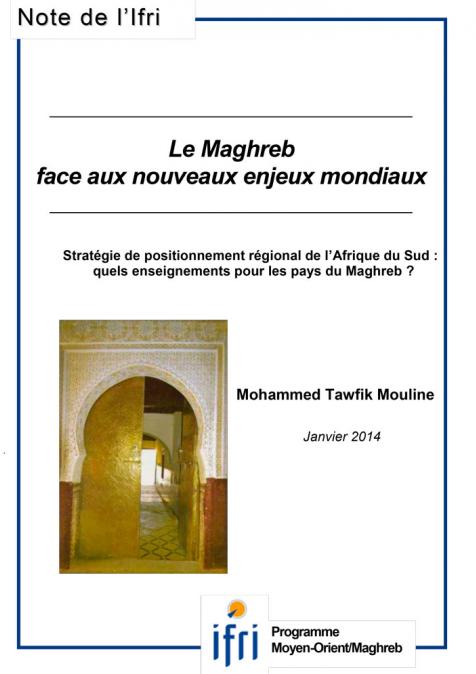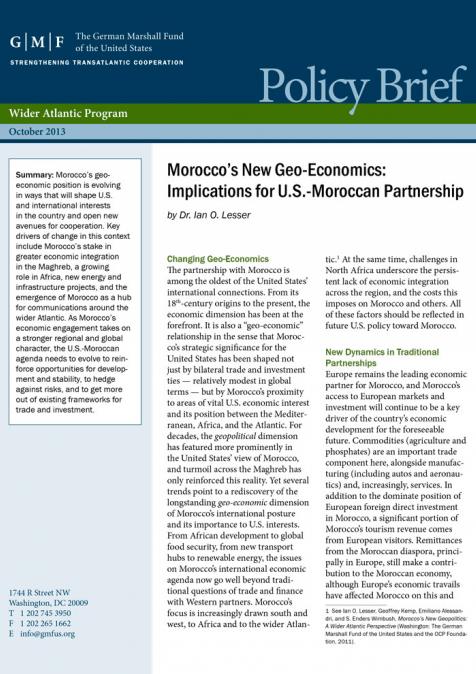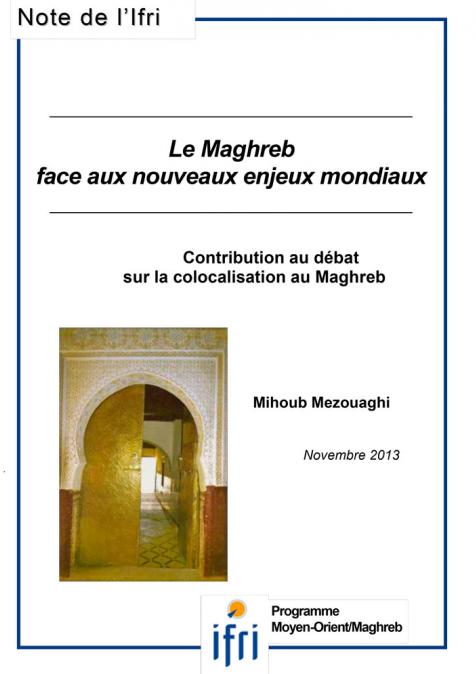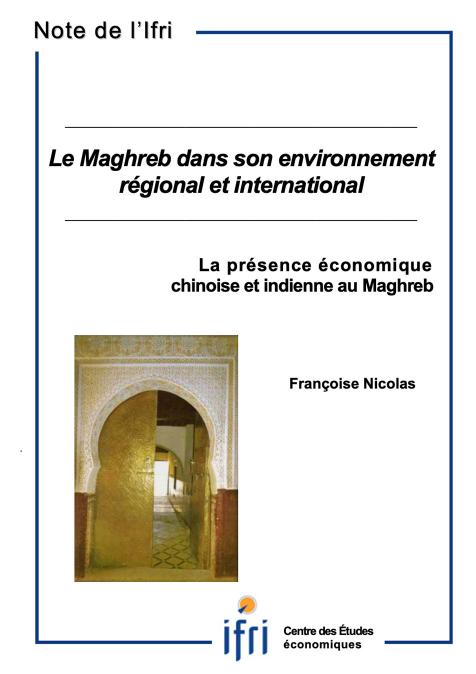Publications /
Opinion
Industrial history was written on Monday, May 15, 2023. Mohammed VI, the king of Morocco, celebrated in the Royal Palace a car from Neo Motors, the first ‘Made in Morocco’ car brand, helping drive the nation towards economic prosperity and social stability. Neo Motors vehicles, financed and built by Moroccan entrepreneurs, will soon compete globally with German, Italian, Japanese and Korean cars. The ‘Neon’ (offered for an estimated 170,000 dirhams, or $15,000) will be assembled and built in an industrial complex in Ain Aouda, near the capital, Rabat. Annually, 580 highly skilled workers are expected to build 27,000 units.
That was not the only promise the entrepreneurs made to the king. In 2025, another Moroccan automotive challenge will provoke headlines-the hydrogen powered “NamX”The world, finally, is obliged to recognize the economic power, invention, and creativity of the North African nation, which in past decades was often underestimated as a dust-covered land of agriculture, its exports limited to oranges, green beans, and tomatoes. Now, solar panels cover the desert, and high-speed trains connect the picturesque towns. As in Tangier, ports are modern, container-oriented, and open to the world’s economy.
The automotive projects, noted Morocco World News (May 15, 2023), “are a significant milestone for the country and will strengthen the “Made in Morocco” label and establish the country as a competitive hub for automotive construction.” The newsletter The New Arab (May 17, 2023) wrote that “Morocco’s ambition to emerge as a hub for electric car production is emboldened by the country’s significant capacity in the field of green hydrogen production.” Years ago the Kingdom passed South Africa as Africa's main car manufacturer. Mega groups like Renault-Nissan-Mitsubishi have assembled vehicles shadowed by palm trees, followed by the Dutch-based Stellantis group, which owns the brands Alfa Romeo, Chrysler Citroen, Fiat, Lancia, Opel, and Peugeot.
A Real Success Story
At the level of the Tangier/al Hoceima region, “Morocco has successfully managed to implement a very attractive economic megapolis”, noted Abdelmonim Amachraa, leading Moroccan specialist on sustainability and Global value chains and collaborator of the OCP foundation, creating an integrated offer of industrial and free zones, where industrial and service activities are exempt from customs legislation, and trade and exchange control regulations. There are three of these zones, one in Tangier, and two others around the city of Kenitra: Melloussa 1, totally dedicated to Renault, on 600 hectares, and Melloussa II. In 2022, the Renault group manufactured more Dacia automobiles in Morocco than Dacia’s main factory in Romania, i.e. 350,000 versus 314,000 (economia.net, February 13, 2023). Automotive analyst Zakia Sudhan noted in Just Auto (February 15, 2023) that Morocco is “becoming a real success story as an automotive manufacturing hub”. The mega-manufacturers have been granted a total exemption from corporate tax for companies operating in those zones for five years, followed by a cap of 8.75% for the next 20 years. It is an offer that is difficult to refuse, particularly as the social environment is stable, highly-skilled worker are available on relatively low salaries, and European markets are located next door.
The American company Lear, which ranked 179 on the Fortune 500 list of the world’s largest companies, operates eleven production sites in Morocco, making car seats and electrical systems. Chinese manufacturers have taken advantage of the opportunity of the Peugeot plant in Kenitra to integrate into this value chain. Thus, the Chinese group CITIC Dicastal has built a factory in Morocco with an investment of $400 million and a production capacity of 6 million car parts per year to supply the Stellantis Group. Other examples illustrate the dynamics and diversity of OEMs (Original Equipment Manufacturers) in Morocco :Bosch supplies ABS and injection systems; Delphi is a specialist in injectors, pumps and cooling systems; Continental manufactures tires and injection systems; Valeo manufactures electronic equipment; and Novares is an OEM for plastic components.
Two Foreign Locomotives
In a Policy Paper titled ‘Driving the Dream: Morocco’s Rise in the Global Automotive Industry’, published by the Policy Center for the New South in May 2023, Abdelmonim Amachraa concluded: “The automotive sector in Morocco is a success story on the global level: it testifies a positive contribution of global value chains (GVC) in the development of national economies. The Kingdom’s first export sector with a production and assembly capacity of 700,000 vehicles, the automobile industry is now a new growth engine for the industrial sector and exports. With a Chinese and a Korean global market leader producing in the Kingdom, Morocco has become one of the leading exporters for US and EU destinations.”
The author is convinced that Morocco has emerged successfully as a new global player, primarily because of its investment in infrastructure and the training of a qualified workforce. ‘’However, writes Amachraa, the current transformations of the automotive industry require huge investments and strategic and integrated alliances. The automotive industry is on the cusp of changes, with advances in autonomous electric vehicles, and transformation in mobility, lowering the barriers to entry in car assembly … and increasing the need for labor-intense products such as wiring harness”. Some simple components, such as brake pads and clutches, will lose market shares because of the conversion to electric cars, which do not require such parts or need less of them. Help could be on the way, suggests Amachraa: “International donors, such as the World Bank and the Clean Technology Fund, are working with industry and governments to invest in new technologies”. Nevertheless, the author warns that the automotive value chain installed in Morocco is driven by only “two foreign locomotives”, Renault and Stellantis, and “there are many examples around the world of what can happen if a country becomes too dependent on few countries, or a few MNEs”. More than 95% of national companies active in the automotive manufacturing sector have more than 200 employees, which shows that most players are industrial groups or multinational firms.
Risky Bet
Local players are poorly represented due to the complexity of accessing international OVCs (Operating Value Contribution), which require high capacities in terms of investment and manufacturing standards. A good example is the Renault Group’s Dacia brand, which has local production and has a 30% local market share. In his study, Amachraa warns that foreign participation with such a large share in clean energy and vehicle infrastructure, new investments would be a risky bet. The automotive sector, he insists, “is by far the most dependent on imported parts and components—the debate over the effective impact of the automobile sector on employment and the balance of payments is far from settled.”
In an extensive study on ‘Trade Policy in Morocco: Taking Stock and Looking Ahead’, published by the Policy Center for the New South and the World Bank, experts analyzed the automobile sector and its importance for the national economy. In 2019, the analysts reported, the automotive and aeronautical sectors accounted for 28% and 3.5% of Morocco’s merchandise exports, respectively, compared to 8.8% and 2.2% in 2008. Still, the Moroccan automobile sector, which is by far the most important, continues to depend heavily on imported components. Its contribution in terms of total employment and the balance of payments remains modest. In 2020, an estimated 4.7 million vehicles were registered in the country, growing from 4.1 million in 2017. Sales of new cars in Morocco decreased slightly in 2022 compared to the previous year, dropping from 175,360 vehicles in 2021 to 161,410 in 2022, according to data from the Association of Vehicle Importers in Morocco (January 6, 2023, Aviam).
The automotive and aeronautical sectors have prompted the Government of Morocco to invest in vastly improved infrastructure, especially in the transport sector, most notably the Tangier-Med-Port complex, which has helped propel Morocco to 24th place globally in the 2020 rankings of the best ports. The high-speed train connects Rabat, Casablanca, and Tangier with often fully-booked trains. The first tests to extend the highspeed line from Casablanca to Marrakech have been conducted, and later, much later, an additional 1200 kilometer link from Agadir to southern Dakhla is planned. The vision of the King and his government, to challenge the global car market with a national product, is part of the logic to open the Kingdom to technology and to prepare for the future. Automotive exports have climbed significantly, achieving a turnover of 83 billion dirhams in 2021, a strong increase from 72 billion dirhams in 2020. The automotive industry occupies a strategic position in exports, accounting for 25% of Morocco’s exports in 2021, which affirms the sector’s resilience during the pandemic and the conflict in Ukraine (‘Trade Policy in Morocco: Taking Stock And Looking Ahead’, Policy Center for the New South, May 2023). Four-fifths of exports are destined for the EU market, in particular France, Spain, Italy, and Germany.
However, Morocco must also defend its new project, the nationally produced Neon and NamX vehicles, against unlikely challengers. Not VW, Honda, Hyundai, or Fiat, but African countries including Egypt, Ghana, Nigeria, Algeria, and Kenya, which are also embarking on plans to develop their domestic car production. Electric, hydrogen, or fossil fuel is the question. Abdelmonim Amachraa warned in his detailed study: “The rise of Asia and the relative decline of the European market in the number of new cars sold have diminished Morocco’s potential to increase critical industrial mass”. Neo and NamX, ‘Made in Morocco’, will have a tough road ahead of them and an industrial mountain to climb, as difficult as crossing the Atlas.

